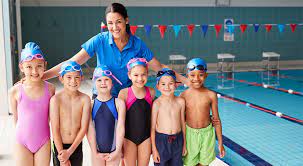Splash Into Opportunity: Why a Water Safety Course Can Be a Game-Changer
A ripple in the pool can create a wave of change. For many Australians, learning to swim is a rite of passage. But for those leading these lessons—qualified instructors—the rewards are more than financial. With drownings still a national concern, water safety is not just a skill; it’s a safeguard. Whether you’re considering a part-time career or a life-changing shift into aquatics, understanding how much swim instructors earn—and how to become one—starts with the right training.
What Is a Water Safety Course?
A water safety course provides individuals with the essential skills to prevent drowning, respond to emergencies, and teach others how to be safe around water. These programs cover swimming technique, first aid, rescue methods, and public education strategies. They’re not just for aspiring instructors—they’re ideal for teachers, fitness professionals, and anyone working near pools, lakes, or beaches.
By completing a recognised water safety course, y
ou’re not only improving your own abilities—you’re helping to reduce the risk for others in your community.
Instructor Pay: What’s the Real Splash?
So, how much do swim instructors actually get paid in Australia?
Let’s break it down:
- Casual instructors: In community or council-run pools, beginners typically earn between $28 to $35 per hour, depending on the location and employer.
- Qualified and experienced instructors: Those holding advanced certifications through a water safety course can command $40+ per hour, especially in private settings or high-demand regions.
- Freelance or contract instructors: Running your own programs or working with niche groups like children with disabilities or adult learners can push rates even higher, particularly in metro areas.
Beyond hourly rates, many swim schools offer incentives such as weekend loadings, bonuses for completing full terms, and paid professional development.
💡 Fact: According to Job Outlook, the demand for swim instructors is expected to grow steadily across the next five years, particularly in child-focused and rural programs.
What’s Covered in a Water Safety Instructor Course?
A standard instructor-level water safety course equips you with core skills such as:
- Teaching techniques for all ages and levels
- Risk assessment and incident prevention
- Emergency protocols, including CPR and rescue skills
- Communication and group management
- Child safeguarding principles
Many programs also include practical placements to build confidence and real-world experience.
A big advantage? You don’t need to be a professional athlete. Passion for safety and a competent swimming ability are the main requirements. If you’re good with kids or enjoy one-on-one coaching, it’s a natural fit.
Why Now Is the Best Time to Upskill
Australia has one of the highest global rates of recreational water use—from backyard pools to world-famous beaches. But alarmingly, Royal Life Saving’s 2024 report showed that over 280 people drowned last year, many in preventable circumstances. The need for qualified educators has never been more urgent.
Whether you’re a parent wanting extra confidence or a schoolteacher aiming to supervise aquatic activities, a formal water safety course is one of the most valuable qualifications you can hold today.
Real Stories, Real Impact
Take Mia, a high school PE teacher from the Gold Coast. After completing her water safety qualification in 2023, she began offering beginner swim classes for women in her community. Within six months, not only had she helped over 60 participants gain water confidence, but she also added a new revenue stream to her career—all without giving up her full-time job.
Or Sam, a university student in Perth, who started casual teaching shifts at a local aquatic centre. The flexible hours, combined with $34/hr pay, helped fund his studies while building leadership and communication skills.
How to Get Started
The first step? Enrol in an accredited water safety course. Courses typically run for a few days to a couple of weeks and are available in most states year-round. Many providers offer blended options—combining online modules with in-person practicals—so you can train around your schedule.
You’ll need:
- Basic swimming proficiency
- A current CPR certificate (or willingness to complete one)
- A Working With Children Check (for instructor pathways)
Once certified, you can apply for roles in schools, gyms, leisure centres, and private programs—or start your own!
Wrap-Up: Dive into a Meaningful, Flexible Career
Swimming isn’t just sport—it’s a life skill. By completing a water safety course, you can empower others, earn income doing meaningful work, and become part of a growing movement to make water safe for everyone.
Whether you’re looking to boost your career, switch industries, or simply contribute to a safer society, this path opens doors that are both practical and purpose-driven.
So why wait? Check what courses are available in your area and take the plunge—because lives depend on it.

